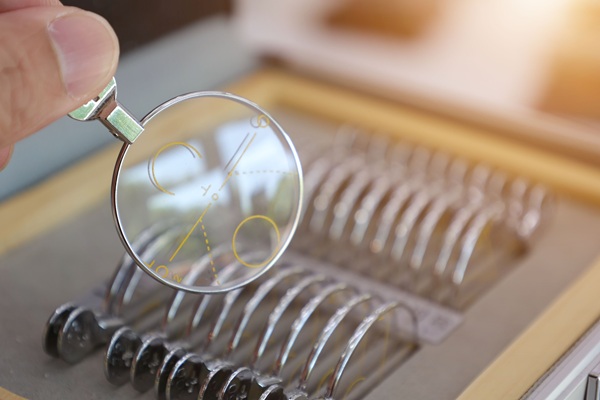5 Eye Problems an Eye Doctor Can Detect

An eye doctor focuses their efforts on managing, diagnosing and treating eye conditions. They also help patients maintain good eye health so that problems don’t arise later on.
Want to know what problems an eye doctor can detect? In this article, we discuss five of these common conditions in depth. This information can be helpful to someone who isn’t sure what type of problem they are experiencing with their eyes or vision.
5 eye problems an eye doctor can detect
Outlined below are a few common problems that an eye doctor can detect, manage and treat. Keep reading to find out more!
Myopia
Myopia is a very common problem that eye doctors detect. When a patient’s vision is nearsighted, the doctor will diagnose them with myopia. Typically, the eye doctor will perform a visual acuity test to diagnose this. The next step in the process would be for the patient to test out contacts or glasses so that their vision can be corrected.
Hyperopia
An eye doctor can also detect hyperopia, which is the opposite of myopia. Instead of the patient experiencing nearsightedness, they will actually have trouble with farsightedness. Hyperopia is when the patient is unable to clearly see things that are up close. Just like with myopia, the eye doctor can prescribe glasses or contacts to treat the condition.
Cataract
Eye doctors are trained to detect a cataract in the eye, which is a serious condition that often causes a lack of vision. It is also the number one leading cause of blindness. A cataract is a clouding of the lens of the eye, which makes it extremely difficult to see. Once detected, an eye doctor will likely recommend the removal of the cataract through a surgical procedure.
Glaucoma
Another condition that an eye doctor can detect is glaucoma, which refers to a number of different diseases that damage the optic nerve of the eye. Glaucomas can result in blindness or vision loss. With the help of an eye doctor, the patient can undergo treatment to lower eye pressure. Treatment may include prescription eye drops or medications, and in some severe situations, laser surgery may also be necessary.
Amblyopia
The medical name for a lazy eye is amblyopia. This medical condition is quite common in children and usually happens when the brain is not connecting with the eyes. Eye doctors are not necessarily able to treat amblyopia once it has developed into adulthood. However, child patients may be able to undergo treatment to correct or at least improve the vision impairment from the lazy eye.
Get started today!
Want to know more about what an eye doctor can detect? Our team would be happy to help you! Eye conditions are very serious and should never go ignored. Reach out to our office today so that we can get you started with the help that you need. Give us a call or stop by.
Request an appointment here: https://www.texasoptical.net or call Texas Optical at (214) 771-7333 for an appointment in our Dallas office.
Check out what others are saying about our services on Yelp: Read our Yelp reviews.
Recent Posts
Progressive lenses offer clear vision at near, arm's length, and far distances without the visible lines found in bifocals. They provide a smooth change in power from top to bottom, which means the eyes can focus comfortably throughout the day. With the right fit and guidance from an optometrist, progressive lenses help reduce eye strain…
Prescription contacts provide a convenient and effective way to correct vision, offering freedom from glasses. For patients considering this option, understanding the fitting process, proper care, and comfort techniques can help ensure long-term success. A first-time wearer can expect guidance from an optometrist at every step, with adjustments designed to create a safe and comfortable…
Digital screens have become an essential part of modern life, making blue light glasses increasingly popular as a solution for eye strain and long-term visual health. These specialized lenses filter harmful blue light emitted from computers, smartphones, and tablets. As digital usage continues to rise, understanding the benefits of blue light glasses can help promote…
A diabetic eye exam is important for spotting and managing vision problems linked to diabetes. Regular eye exams help prevent issues like diabetic retinopathy, macular edema, and permanent vision loss. Understanding what happens during and after a diabetic eye exam can ease concerns and encourage better eye care for people with diabetes.The main goal of…


